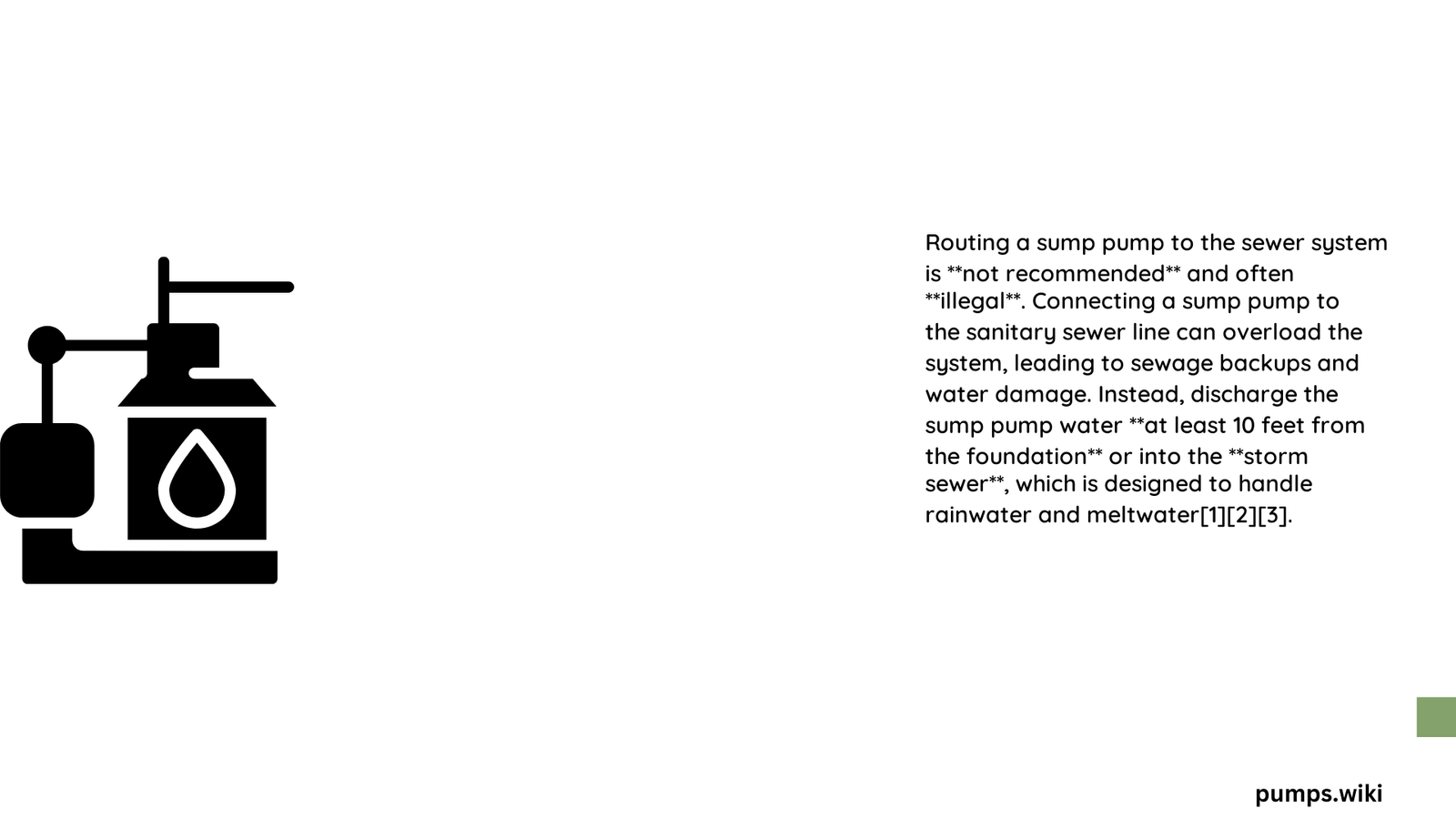Routing a sump pump to a sewer system is a complex process fraught with legal and environmental challenges. Homeowners must navigate strict local regulations, potential environmental impacts, and technical considerations to ensure proper water discharge. Understanding the nuanced requirements and potential alternatives is crucial for effective and compliant sump pump installation.
What Are the Legal Restrictions for Routing Sump Pump to Sewer?
Connecting a sump pump directly to a sewer line is generally prohibited by most municipal codes. The primary reasons include:
- Environmental Protection: Preventing contamination of sanitary sewer systems
- Infrastructure Preservation: Avoiding potential sewage system overload
- Health Safety: Reducing risks of backflow and potential health hazards
Key Legal Considerations
| Regulation Type | Typical Requirement |
|---|---|
| Municipal Codes | Prohibit direct sewer connection |
| Environmental Regulations | Mandate clean water discharge |
| Plumbing Standards | Require approved drainage methods |
Why Can’t Sump Pumps Connect Directly to Sewer Lines?

Sump pumps collect groundwater and potential contaminants that should not enter sanitary sewer systems. The risks include:
- Sewage System Overload
- Excess water volume strains municipal infrastructure
- Increases treatment costs
-
Potential system breakdowns
-
Contamination Risks
- Groundwater may contain sediments
- Potential chemical contamination
- Risk of introducing pollutants into water treatment systems
What Are Approved Sump Pump Discharge Methods?
Homeowners have several legal and effective alternatives for sump pump water discharge:
- Dry Well Installation
- Underground drainage pit
- Allows gradual water absorption
-
Requires proper soil conditions
-
Lawn Drainage
- Direct discharge away from foundation
- Minimum 10-foot distance recommended
-
Ensures water dispersal without pooling
-
Storm Sewer Connection
- Requires municipal permit
- Must meet specific technical standards
- Professional installation recommended
How Much Does Proper Sump Pump Routing Cost?
Cost breakdown for alternative routing methods:
| Method | Estimated Cost Range |
|---|---|
| Dry Well Installation | $500 – $1,500 |
| Lawn Drainage Setup | $200 – $600 |
| Storm Sewer Permit & Connection | $300 – $1,000 |
What Professional Steps Ensure Proper Routing?
Professional installation involves:
- Site evaluation
- Soil percolation testing
- Determining optimal discharge method
- Obtaining necessary municipal permits
- Installing appropriate drainage infrastructure
What Maintenance Considerations Exist?
Regular maintenance is crucial:
– Annual system inspection
– Check discharge pipe for blockages
– Monitor water flow and drainage efficiency
– Verify compliance with local regulations
Potential Consequences of Improper Routing
Risks of incorrect sump pump routing include:
– Significant municipal fines
– Potential infrastructure damage
– Environmental contamination
– Potential home insurance complications
Recommended Professional Consultation
Given the complexity of sump pump routing, consulting local:
– Plumbing professionals
– Municipal water management experts
– Building code inspectors
Ensures comprehensive and compliant water management strategy.
Final Recommendations
- Always check local municipal codes
- Prioritize environmental considerations
- Invest in professional installation
- Maintain regular system inspections
References:
– EPA Stormwater Guidelines
– Local Municipal Plumbing Codes
– Professional Plumbing Association
